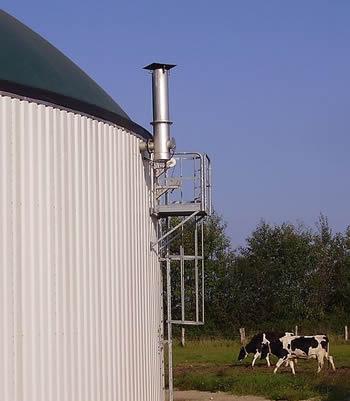Learning About Biogas Recovery
 Haase maize anaerobic digester
Haase maize anaerobic digester
Credit: CC-BY-3.0 by FVortexrealm
Biogas is created when animal waste, or manure, decomposes. Capturing biogas from cattle, hog and poultry farms can reduce greenhouse gas emissions and recovering the methane from the biogas can provide a cost-effective source of renewable energy. Recovered biogas can be an energy source for electricity, heating or transportation fuel.
Biogas recovery is a proven technology that is widely used in sectors like food processing and wastewater treatment. In agriculture, biogas recovery systems are already used at hundreds of farms, and could be used at thousands more cattle, hog and poultry farms. For example, AgSTAR estimates that biogas recovery systems are technically feasible at over 8,000 large dairy and hog farms alone!
A natural process called anaerobic digestion creates biogas. Anaerobic digesters are closed systems that harness this natural process to produce biogas and other useful coproducts. These systems also reduce odors, pathogens and waste.
Learn more about:
